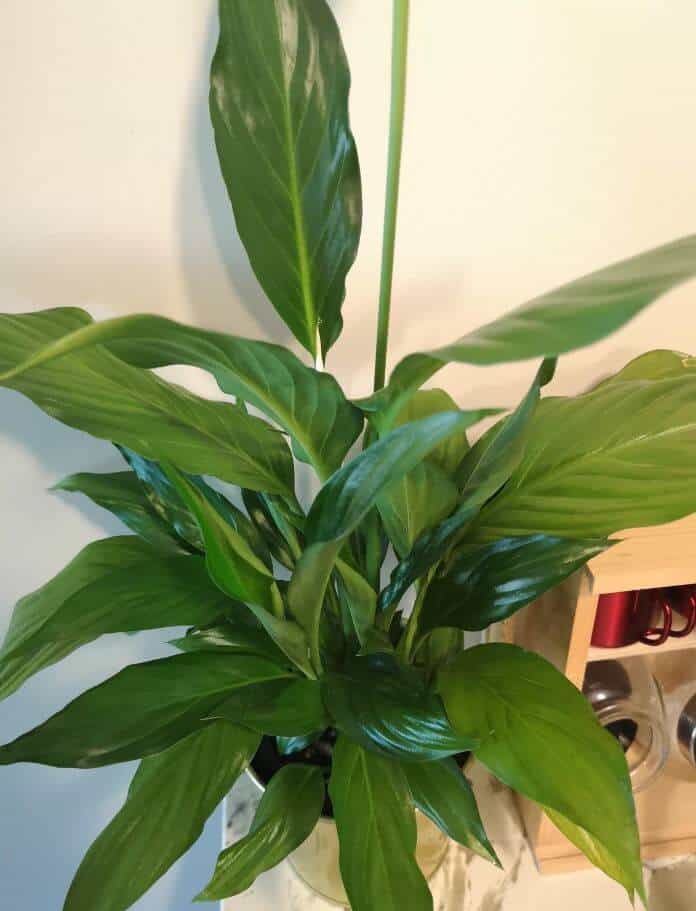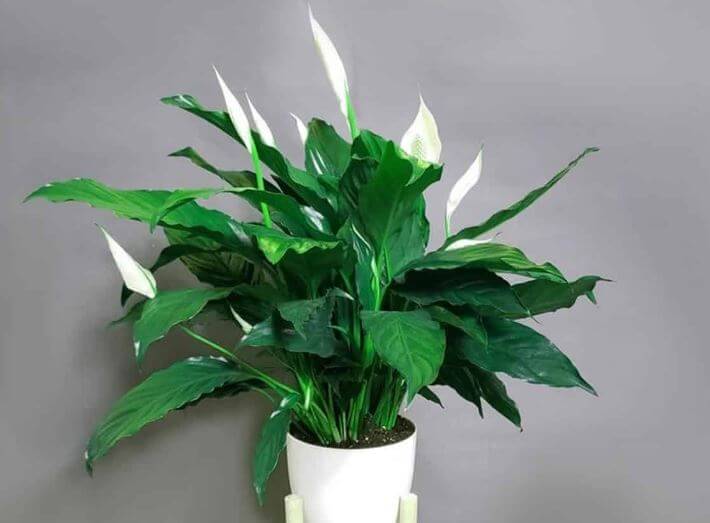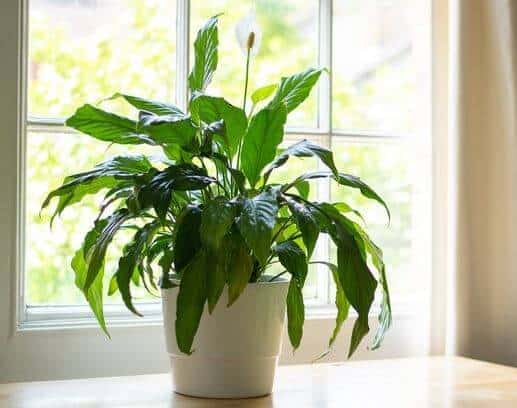Last Updated on August 15, 2023 by a Friendly Gardener
If your lovely and elegant Peace Lily plant suddenly has crumpled leaves, it can be a cause for concern. Generally, when peace Lily foliage begins to curl and wrinkle it is due to insufficient moisture. But the question may be why is your plant running low on moisture? There are a variety of conditions that contribute to inadequate moisture retention. By correcting environmental issues and your plant’s care routine, you can restore your plant’s health and any issues plaguing it.
Peace Lily curling leaves can be triggered by direct sunlight exposure, environmental temperature, underwatering, insufficient fertilization, pest infestations, or a case of root rot. Whatever the cause, by adjusting care, most of these issues will resolve quickly. Causes such as pest infestations or root rot will require more incisive intervention.
Why Are My Peace Lily Leaves Curling?

Here is a selection of the most common reasons that Peace Lily leaves curl and what you can do to help your plant.
Direct Sunlight
Peace lilies naturally grow on tropical rainforest floors, hence they thrive with dappled light and not direct sunlight. Exposing your Peace Lily to direct sunlight will stress it and potentially damage it. Plus, the heat produced by direct sunlight will cause foliage to lose moisture quickly. Unlike succulents or cacti, Peace Lily leaves are not fleshy but rather thin and do not store a water reserve. When moisture runs low, leaves may curl upward, sag, and droop. Leaf curling reduces the surface of leaves in an attempt to preserve moisture. When left in sunlight for extended periods, leaves can develop dead, dark spots and then fall off.
What to do
Move your plant to a new location without direct sunlight exposure. Indirect light is ideal.
High Environmental Temperatures

High indoor environmental temperatures can also cause moisture loss and will do so even if your plant is located in a shaded place. Spathiphyllum plants prefer environmental temperatures that measure in the 60° to 85°F range. Check your indoor temperature if you are stumped about why your plant may be curling its leaves. Temperature consistency is equally important. These plants do not appreciate drastic fluctuations in temperatures. Changing temperatures within 24 hours can stress a Peace lily.
What to do
Move your plant to a location with a constant temperature in the 60° to 85° F range. Keep your plant away from air conditioning and heating units and vents or drafty spots that can play havoc with temps.
Inadequate Humidity
For any tropical rainforest plant, humidity is necessary. In homes and offices with dry air due to heating, air conditioning, or the area climate, low humidity levels could cause your plant’s leaves to curl. Ideally, the environmental temperature should measure above 50%. If you have doubts, acquire a hygrometer to measure humidity levels.
What to do
The easiest thing you can do is cultivate your Peace Lily in a room with higher humidity like a bathroom or kitchen, just make sure that these rooms enjoy bright light. A small space humidifier can resolve problems for your Peace Liy and other humidity-loving houseplants. For a DIY solution, create a pebble tray by filling a tray with pretty stones and water. Place your plant’s container on the tray. This will increase humidity in the immediate area of the plant. You can also group plants to create a microclimate through shared transpiration.
Underwatering

More often than not, the problem is a little neglect or forgetfulness. Plant parents forget to water their Peace Lily plants so foliage will begin to curl and shrivel. Stems will also begin wilting. When subjected to prolonged underwatering, leaf edges will turn crispy and then the leaf will gradually dry out.
What to do
Adjust your watering schedule. If you are uncertain about how often to water, invest in a moisture meter to control moisture levels around the root system. You can also do the finger poke test. If the soil bed feels dry to an inch deep, water. Whenever you spot shriveled, or peace Lily curled leaves, check the soil bed moisture level first. When dry, water deeply allowing water to drain from the container’s drainage holes. If insufficient water is the cause, your plant will perk up within hours.
Overwatering/Root Rot

Excessive moisture can also be a problem and can be fatal. When the soil is soggy, your plant may exhibit symptoms similar to underwatering. Peace Lilies need well-aerated soil so that oxygen arrives at the root system. If the soil is waterlogged, the roots will not be able to breathe and will drown. Fugal microbes can also develop leading to a root rot infection. If left untreated, it will be fatal. When the roots drown, they are unable to send moisture to foliage and leaves will begin to curl.
What to do
If you suspect root rot, you need to remove the plant from the pot and soil to verify. If roots appear dark, mushy, and smelly…it’s the rot. Rinse all the soil from the roots. Trim off affected roots and compromised stems and leaves. Treat roots with a fungicide like organic Neem oil. Sterilize your plant’s pot to remove any spores. Repot your plant in fresh soil that is well-draining.
Pest Infestations
Critters can be a problem, especially sapsuckers that suck the juices and nutrients from your plant.
If you notice the signs of a pest presence such as:
- Black, white, or red specks
- Smooth brown bumps on stems and leaves
- White fuzzy deposits
- Sticky residue
You may have a pest infestation.
What to do
Rinse off the foliage to remove pests, then treat with insecticidal soap or Neem oil spray. Repeat these steps until all signs are eliminated.
Inadequate Nutrients

While Peace Lilies are not heavy feeders, they can use a bit of a boost. When cultivated indoors, they don’t have access to the same nutrients as those found in their natural habitats. Inadequate levels of calcium, boron, or zinc can cause leaves to grow and behave strangely.
What to do
Add diluted liquid houseplant fertilizer (1/4 recommended dosage) for foliage plants to your care routine every two weeks during the growing season.
A Final Thought
Peace Lily curling leaves are usually due to a lack of moisture. If this is not the case, verify the other potential problems that may trigger this plant behavior.


